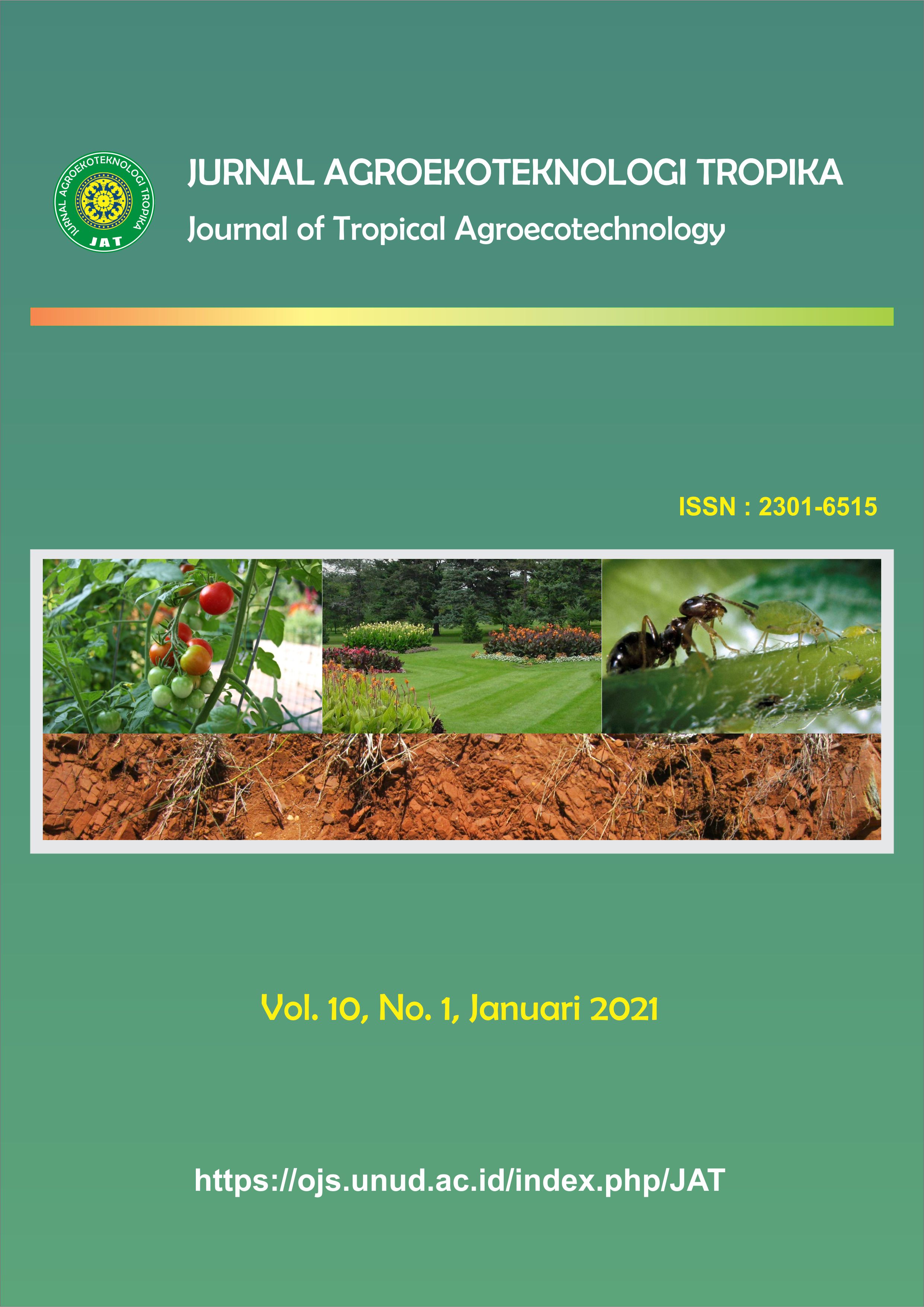Evaluasi Status Kesuburan Tanah Sawah Berbasis Sistem Informasi Geografis (SIG) di Beberapa Subak Kecamatan Mendoyo Kabupaten Jembrana
Abstract
Evaluation of Rice Field Fertility Status Based on Geographical Information System (GIS) in Several Subak, Mendoyo District, Jembrana Regency
Research on Evaluation of Rice Field Fertility Status Based on Geographical Information System (GIS) in Several Subaks of Mendoyo District, Jembrana Regency, was conducted in December 2019 - May 2020. The purpose of this study was to determine the status of soil fertility and what fertility parameters are the limiting factors. provide directions on the management of soil fertility in accordance with the status of soil fertility and making maps of soil fertility status in several subaks of Mendoyo District. The method used in this research includes Survei and soil testing methods at the Laboratory of Soil and Environmental Sciences, Faculty of Agriculture, Udayana University. This research begins with making a map of homogeneous land units by overlaying a map of soil types; slope map of slopes; a scale of 1: 25,000. Then twelve homogeneous land units were obtained and the soil samples were taken by purposive sampling and analyzed the chemical properties of the soil in the laboratory which included: CEC; BS; Organic C; total P and K of soil. The soil fertility status is evaluated according to the PPT technical guidelines (1995). The results showed that the soil at the study location had two soil fertility statuses, namely high and medium soil fertility status. Locations that have moderate fertility are SLH I (Subak Tibubeleng), III (Subak Tibubeleng), VI (Subak Telepus), VII (Subak Tegal Gintungan), X (Subak Jagaraga), XI (Subak Telepus), and XII (Subak Jagaraga). While high fertility status is found in SLH II (Subak Tibubeleng), IV (Subak Tibubeleng), V (Subak Tegal Gintungan), VIII (Subak Tibubeleng), and IX (Subak Jagaraga). The soil fertility parameter that becomes an obstacle in the status of soil fertility in the location of this study is the low organic-C content. The direction of soil fertility management for SLHs with low C-organic content is the addition of organic matter and P fertilizers to increase the soil fertility status.



